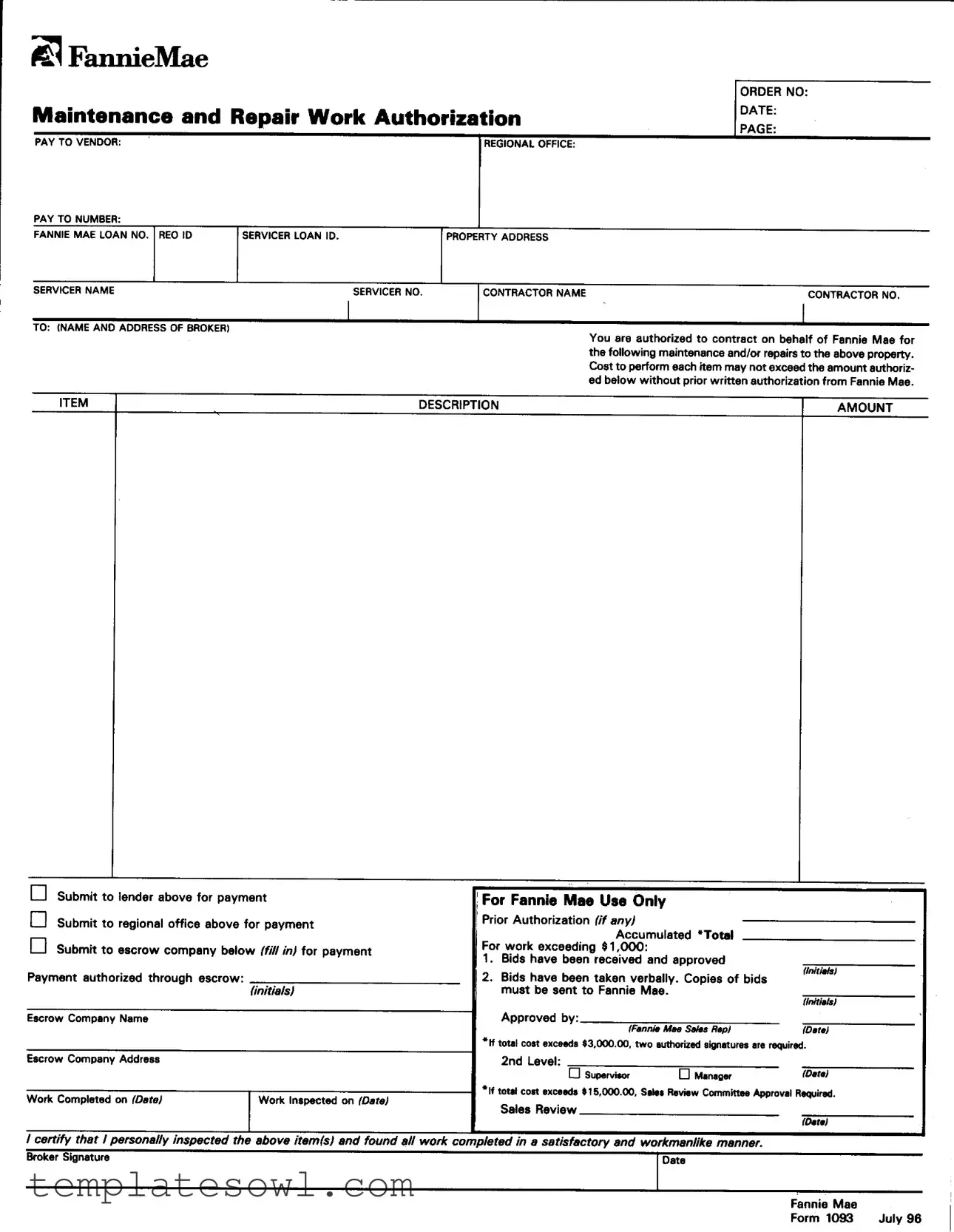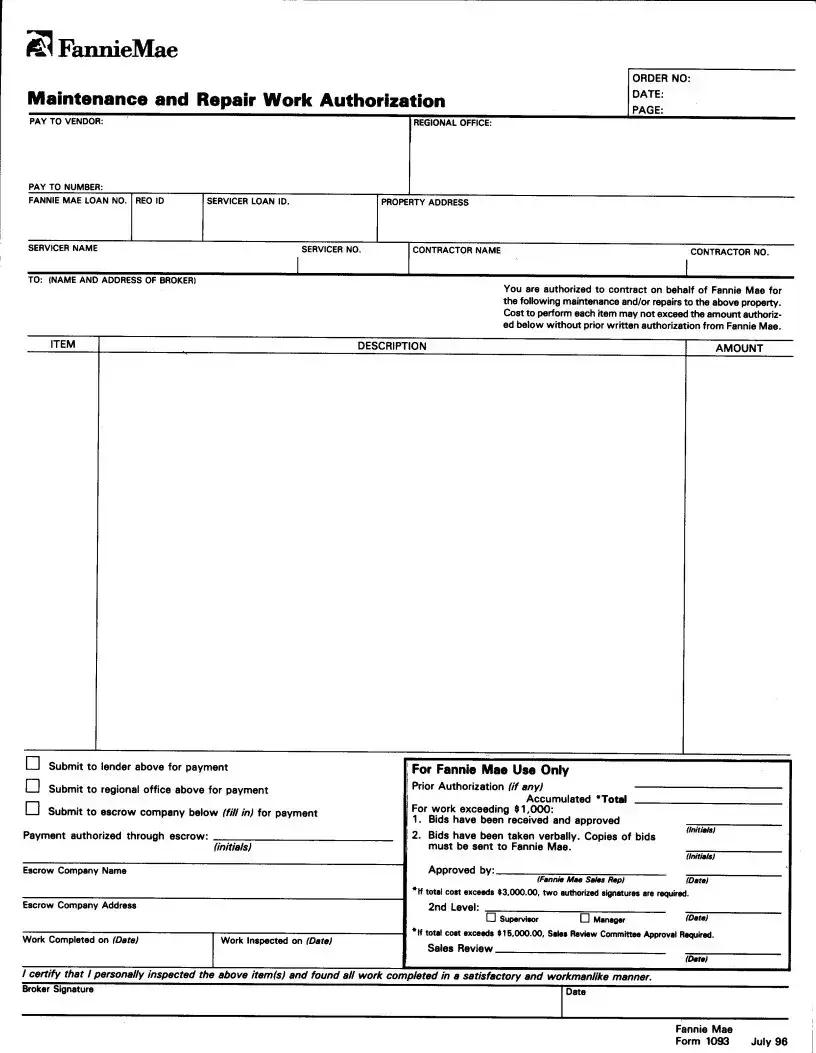Instructions
Maintenance and Repair Work Authorization
We use this form to authorize brokers or agents to perform certain repair or maintenance work for an acquired property. The broker or agent uses this form to request a servicer to reimburse it for expenses incurred for the maintenance or repair work.
Copies
Original, plus three.
Printing Instructions
This form must be printed on letter size paper, using portrait format. When printing this form, you must use the "shrink to fit" option in the Adobe Acrobat print dialogue box.
Instructions
When we authorize a broker or agent to incur expenses related to repair or maintenance work, we send the broker or agent an original and one copy of this form.
When the work is completed, the broker or agent must inspect it, take photographs, obtain appropriate invoices, and obtain any needed lien releases. Once the broker or agent is satisfied with the completed work, he or she should sign the certification and submit the original and one copy of Form 1093 to the servicer indicated at the top of the form--along with the photographs, invoices, and lien releases.
The servicer should pay all invoices that are attached to an original Form 1093, as long as they have been authorized by us and certified by the broker or agent. The servicer may request our verbal authorization if it believes that the broker or agent should be reimbursed before all supporting documentation is available.
To obtain reimbursement for expenses paid to brokers or agents, the servicer should submit a Cash Disbursement Request (Form 571) to us. The servicer should retain a copy of Form 1093--along with its supporting documentation--for its records.
Instructions Page


